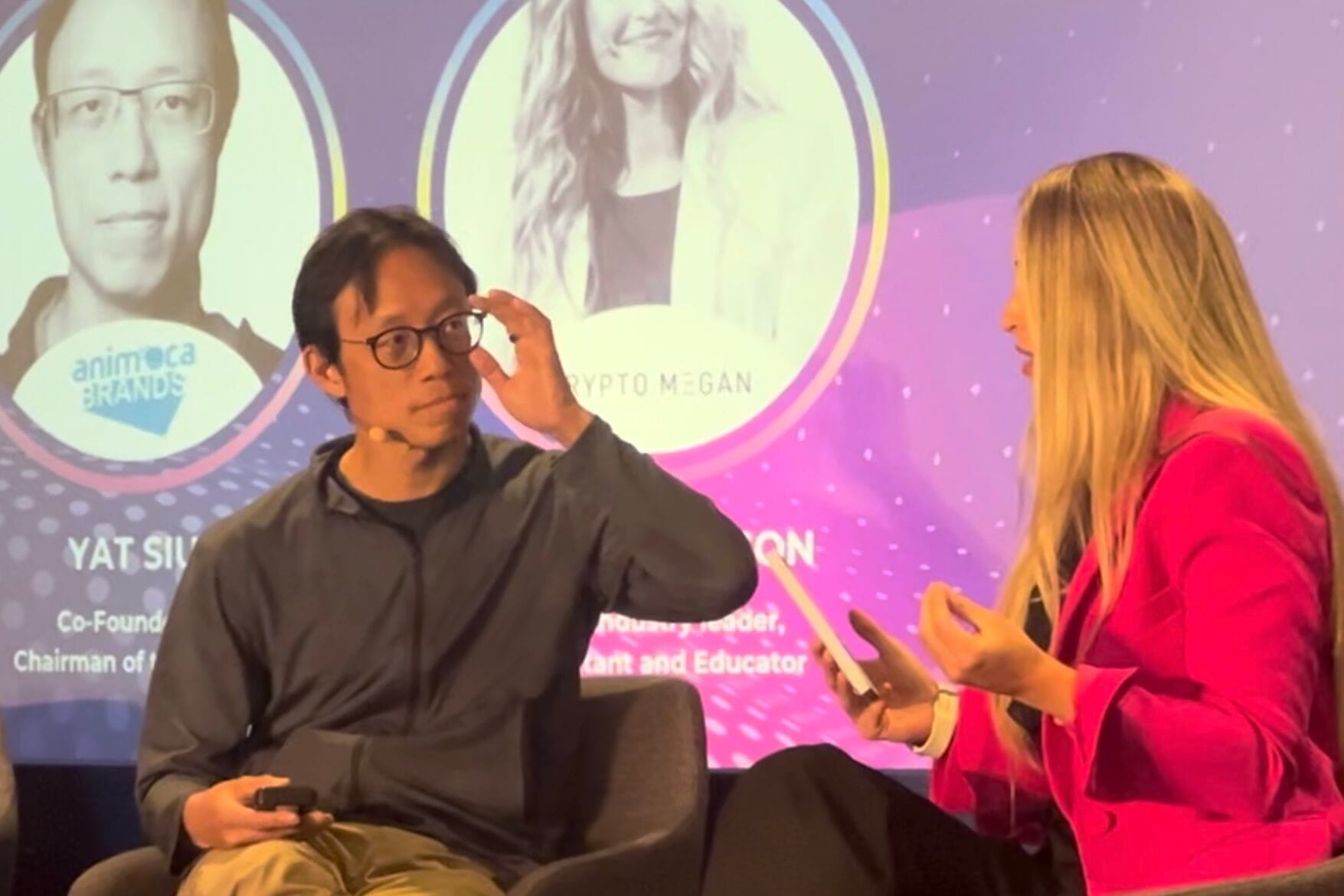A classically trained musician, Yat Siu began his career at Atari Germany, then established Hong Kong Cybercity/Freenation, the first free web page and email provider in Asia. More recently, he’s been on a mission to deliver true digital property rights in areas of blockchain, NFTs and web3. At CONF3RENCE & Blockchance, the leading Web3 and AI event in Germany, Yat spoke with Megan Nilsson, also known as Crypto Megan.
So what blockchain is, is a political social movement in one form or the other.
Yat Siu on May 15, 2024 at CONF3RENCE
Key Topics
- Web3 and its significance
- Animoca Brands› investment philosophy
- Network effects in Web2 vs. Web3
- The concept of shared network effects
- The role of data and ownership in Web3
- Capitalism and investment in the Web3 ecosystem
- The global landscape of Web3 adoption
Summary Fireside Chat
Yat, the chairman and co-founder of Animoca Brands, discussed the company’s extensive investment portfolio in the Web3 space, including well-known subsidiaries like The Sandbox and investments in platforms like OpenSea and Axie Infinity. He emphasized Animoca Brands› belief in the «shared network effect,» a philosophical approach to investment and growth. Yat explained that in Web2, network effects are isolated and owned by platforms, leading to trillions of dollars in value that users cannot own or control. In contrast, Web3 allows for shared network effects, where growth in one part of the ecosystem benefits the whole, creating an anti-monopolistic and interconnected network.

Yat also touched on the idea that everyone in Web3 needs to be an investor to grow within the space, contrasting this with the lack of venture teams in traditional companies like Apple. He argued that if companies like Apple invested in their ecosystems, it would lead to a healthier and more flourishing environment.
The conversation then shifted to the concept of stakeholder land ownership in Web3, where even owning a small amount of a token makes one a stakeholder with governance rights. This contrasts with the limited number of shareholders in major Web2 companies, leading to a class divide between capital owners and laborers. Yat likened Web2 users to serfs, working for free and without ownership, whereas in Web3, token ownership aligns stakeholders› interests with the network’s success.

Yat also addressed the misconception of tokens as mere currency, explaining that they represent network effects and combine financial and application utility. He highlighted the inefficiency of Web2 advertising models and how airdrops in Web3 can directly reward end users, strengthening network effects.
Finally, the global perspective on Web3 was discussed, with Yat mentioning his role in the Web3 Advisory Task Force for the Hong Kong government and the proactive stance of Asian countries in embracing Web3. He pointed out the political motivations behind this, such as de-dollarization and avoiding digital colonialism (like in Europe), and the desire to engage youth in the future economy.
This fireside chat was my personal highlight of the first day at CONF3RENCE & Blockchance. I’ll be also summarizing the panel discussion «Pioneers of Pixel: Tracing the Origin of Digital Art» as well as the keynote «4 Waves of AI – GenAI and what’s next» by Google GenAI ambassador Steven Mc Auley. Apparently, he wasn’t the only one having an «iPhone moment» during all the AI product announcements of the last weeks.
Credits
- Main picture and video by Nick Weisser




Schreibe einen Kommentar